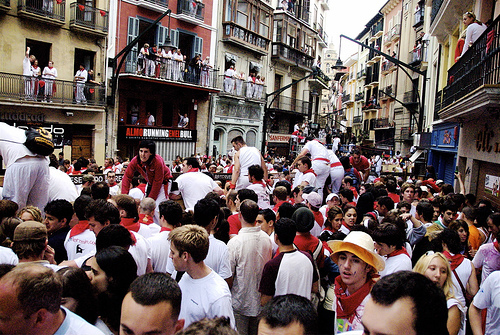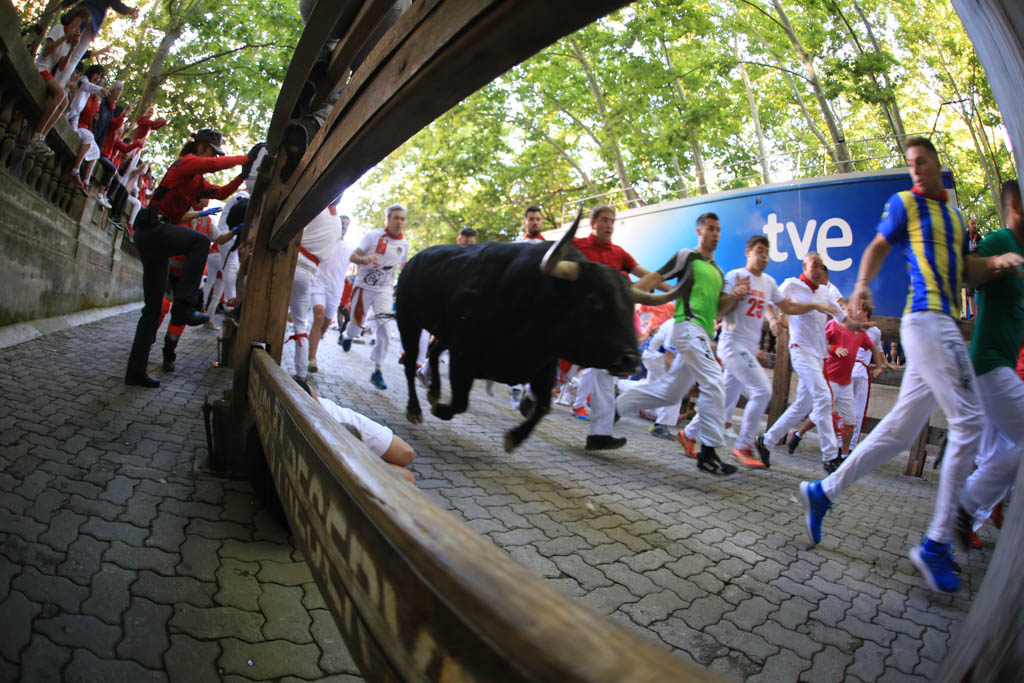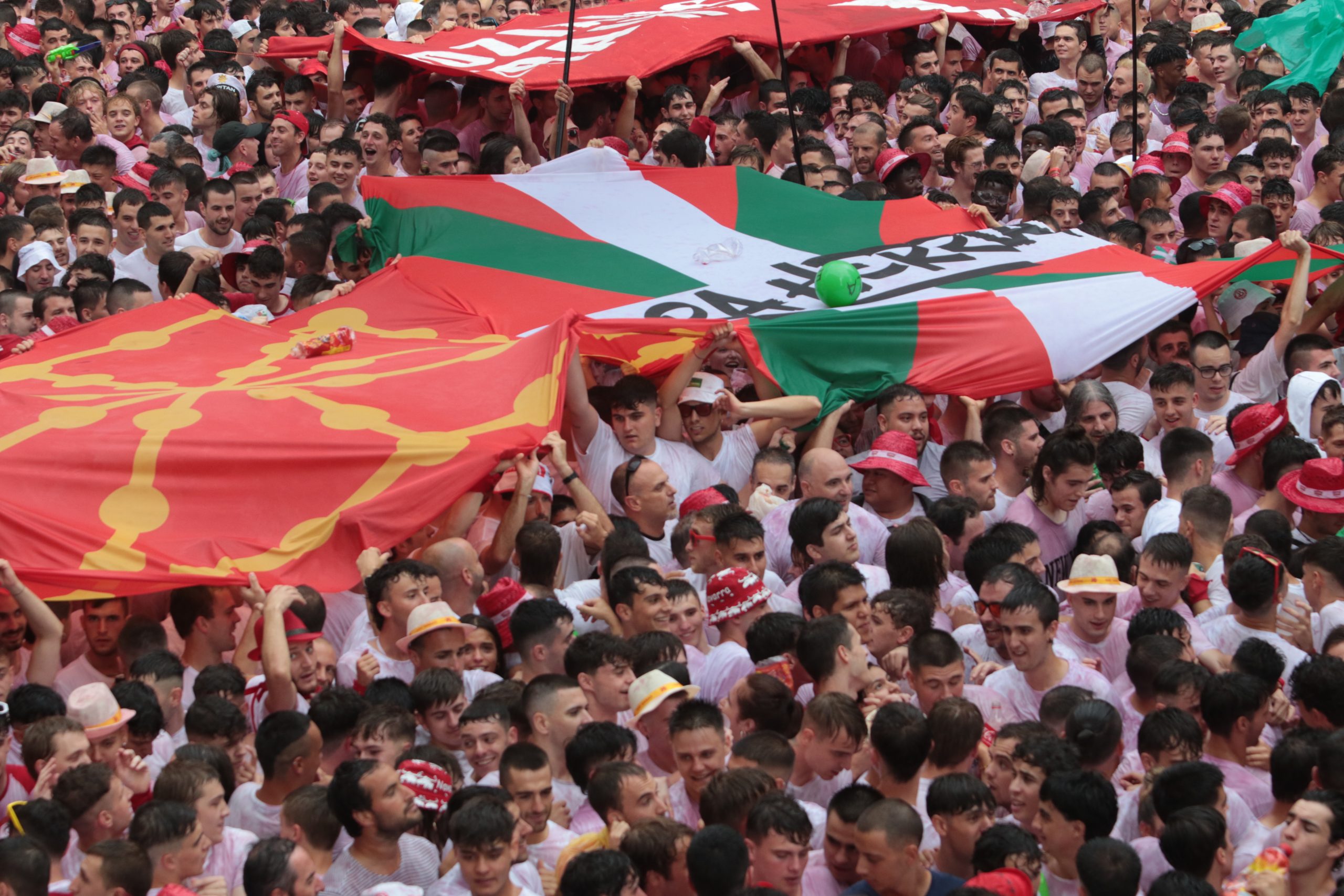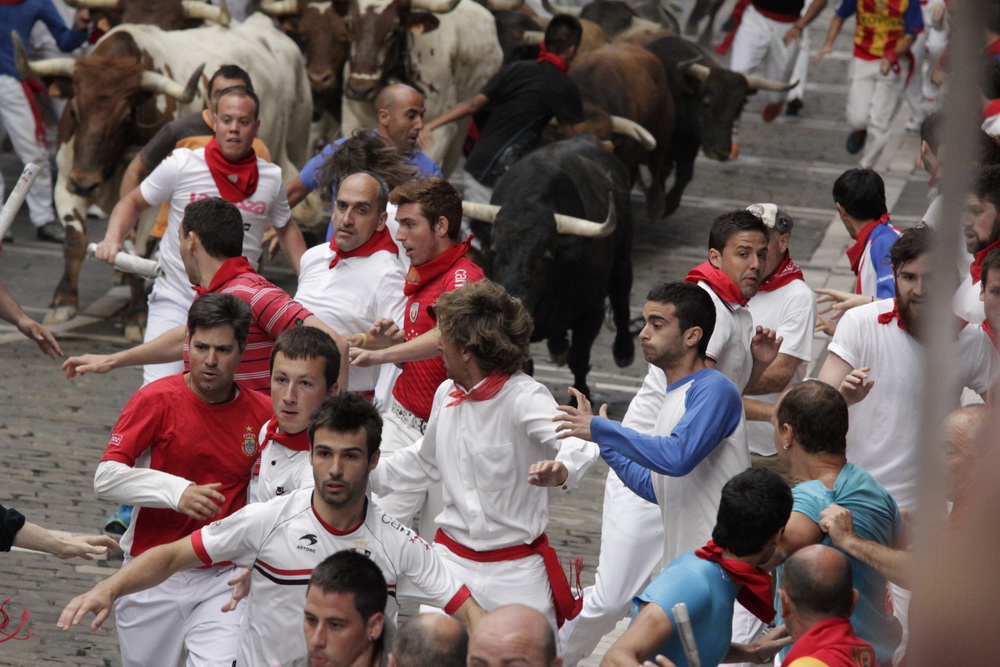In 2006 the organisers of the encierro in Pamplona experimented with a treatment on the surface of the streets around the curve of Mercaderes and Estafeta. The aim was to improve the grip for the bulls and reduce the instances of them slipping or falling into the barriers. Ultimately the purpose was to improve safety because falling bulls at La Curva normally result in a major separation of the pack which can then lead to more sueltos, longer runs and more gorings. While this may be good for the authorities it is not necessarily good for the runners down on La Curva for whom that particular spot and that particular run are special; unique, and require specific skills and timing.
Running La Curva is indeed specialised; one of a number of tramos that may be considered as such, along with lower Santo Domingo and the Telefonos stretch. Runners waiting at the curve, (on the left-hand side looking down from Ayuntamiento) are relying on a number of factors to allow them to get in front of the bulls at the start of Estafeta; they are looking for an existing split in the pack or hoping that the bulls will collide with the barriers and either slow significantly or slow up. Any of these instances should allow the runner an opportunity to dash across La Curva (often known as ‘threading the needle’ because it may require the runner to pick a way through bulls, cabestros and people), and get into a good position in front of some of all of the bulls.
The hearts of La Curva runners must have sank on hearing of plans which, if successful, would significantly reduce their opportunities on this tramo. The drama of the encierro is often focused on La Curva and it has long been a prime and coveted position for photographers. The encierros of 2006 were more closely watched than ever to see if the measures would actually have an effect. Their apparent failure resulted in a combination of derisory comments and sighs of relief as it appeared that nothing had changed, but then in 2007 the bulls were noted to keep their feet on La Curva and this was repeated in 2008. Regular runners on that tramo were missing out, getting frustrated and complaining that everything had changed for the worse. Mike Phelps admitted that he had much better runs up on Telefonos that La Curva. Joe Distler was heard muttering that he would have to try something different next year and La Curva newcomer Mat Dowsett was baffled by the lack of action. Who knows what Bruce Sinclair and Victor Lombardi would have made of it all if they had been around. Perhaps they already had a foresight of the future.
The organisers must have been thrilled; only 9 gorings in 2 years and 2008 was the safest in 10 years. Now with no reason for the organisers to let things go back to how they used to be the question has to be “what future now for La Curva?” If the bulls continue to take the turn cleanly then the regular runners may be faced with having to run elsewhere as the former dramatic location is tamed. New tactics may need to be employed, new starting points perhaps and the specialised La Curva runner may even vanish forever.
The die is not yet cast and after 2 lean years many runners are still weighing up the evidence. Some said that the clean runs of 2008 were more down to the discipline of the cabestros than the surface of the street. Only time will tell, but the fears of the runners on La Curva may yet be realised if the current situation continues. The future of La Curva looks fragile; Yolanda Barcina must be rubbing her hands with glee.




